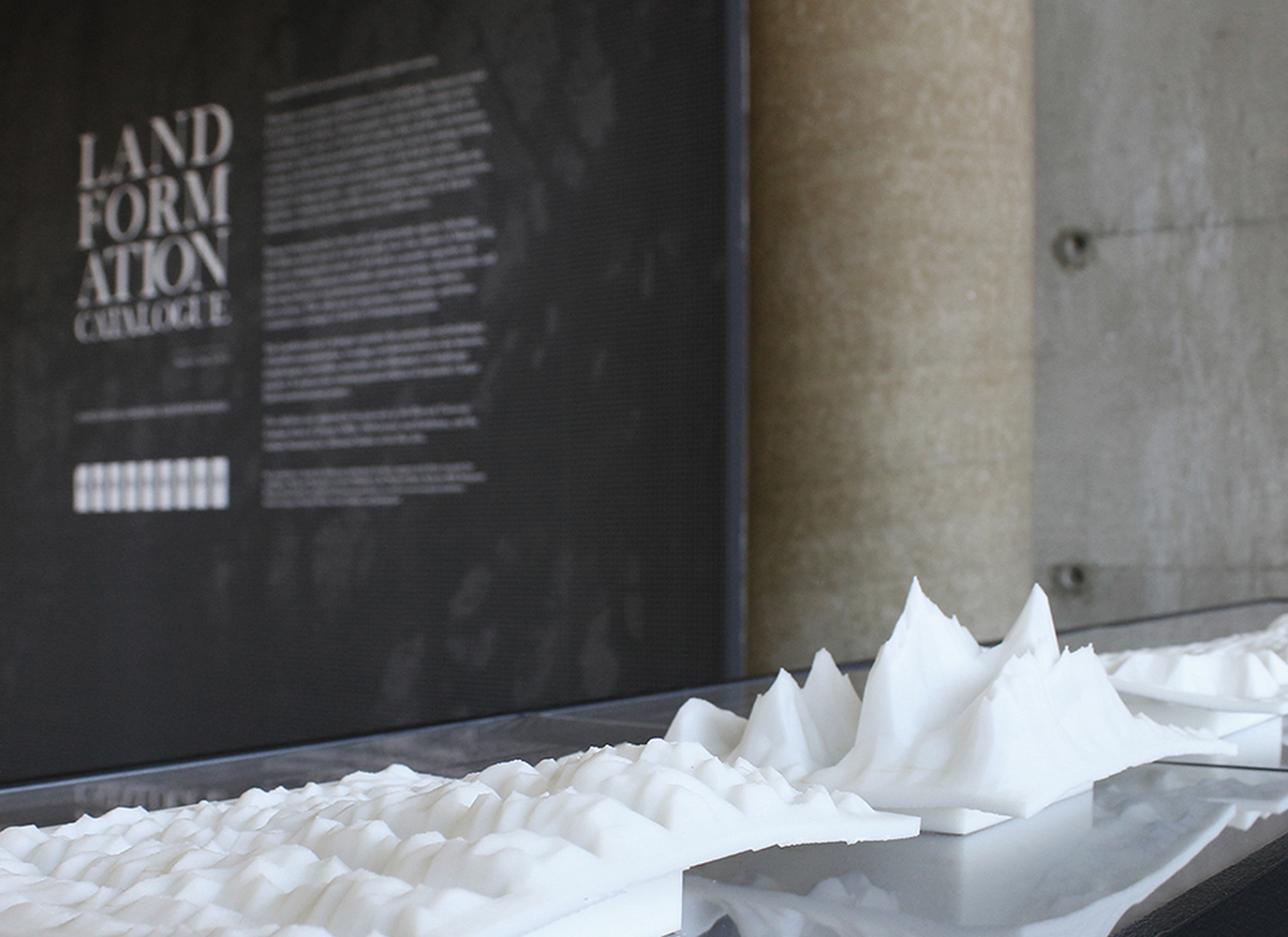Landformation Catalogue
Ground is both site and material for design intervention.
Through a systematic manipulation of the landscape, humans account for the fastest geological transformation of the Earth’s surface in its 4.54 billion year history. Anthropogenic activity is responsible for the re-formation of more of the Earth’s surface than all other mechanisms combined. Agricultural and industrial practices such as mining, farming, grazing, and damming impact a majority of the Earth’s surface. Combined with formations and programs traditionally held within the domain of design practice – spaces of habitation, occupation, protection, and labor – humans have steadily increased the depth of the Earth’s anthropocentric event layer to span over 2,000 meters.
Human beings operate at the scale of geomorphic agents, relocating 120 billion metric tons of earth annually, twice the volume of Mount Fuji. Directly reshaping the surface of the Earth to provide capacities not immediately or adequately available, extracting energy and materials, and affecting behaviors and phenomena are results of human-driven interventions. This collection of operations, technologies, and forms constitutes a catalogue of Earth’s re-formation potentials.
The Landformation Catalogue examines the generative methodologies of landform manipulation, revealing correlations between the histories, morphologies, assemblies, materials, and affordances of landscape practice. It analyzes the resulting spatial artifacts of humanity’s larger Earth transformation project. The exhibition was supported by the generosity of the Harvard University Graduate School of Design (GSD), GSD Lectures and Exhibitions, and the Graham Foundation for Advanced Studies in the Fine Arts.

 Study Architecture
Study Architecture  ProPEL
ProPEL 
